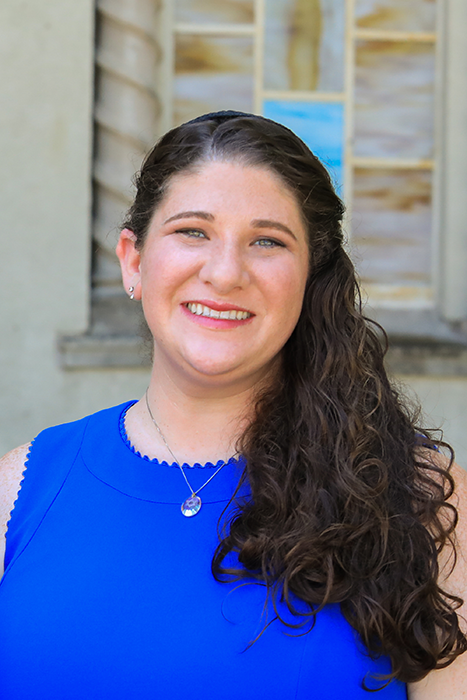Supporting newcomers to Judaism and helping them find belonging is one of Rabbi Marina Yergin's greatest joys in her work at Temple Beth-El in San Antonio, Texas where she has served since 2015. Known affectionately to her students as the "Resource Queen," Rabbi Yergin designed a dynamic Introduction to Judaism program where each spring, students learned "Stepping Stones to Basic Jewish Knowledge" followed in the fall by "Choosing Judaism," a discussion-based class geared specifically for those working to become Jewish. She sought her students' input and expanded and adapted the syllabus and curriculum as the program grew. In seven years, she has worked with over 100 students. Last year, Rabbi Yergin decided to refer her students to the URJ's Intro to Judaism Online program and concentrate her energy on conversion students in the fall semester.
Rabbi Yergin shares five best practices:
- For her Choosing Judaism class for people exploring conversion, Rabbi Yergin brings in a panel of students from the previous year. She takes special care to include students who now play leadership roles in the community. This allows current conversion students to see that taking on responsibility in the community "is normal here - and that conversion is just one step on the journey toward greater belonging and leadership within the congregation." She has found that class also helps address imposter syndrome. "I can say to them over and over again: you're a Jew and you belong, but when they hear it from other people who have been through it and have spent the past year being a Jew, it's super meaningful and helps them feel connected."
- Rabbi Yergin invites representatives from local Jewish organizations, like the local Jewish Federation, Jewish Community Center, and Jewish day school to join the class so that students feel invested and informed about the local Jewish community. It also helps students understand that they are joining a wider Jewish community that reaches beyond the synagogue. Rabbi Yergin also invites all of the auxiliary groups at the Temple, such as the Women of Reform Judaism, to create a video of what they do and who they are-this way students know what is happening at the synagogue and beyond. She is thinking about other ways to expand these efforts, perhaps with an activity fair (Covid permitting).
- Rabbi Yergin reflected on her teaching style, which helps students connect: "I am unapologetically me, and so I try to be me on and off the bimah. Helping people feel like I'm a person-so many of them are so nervous! -developing a rapport, letting them see that we're different from some of the clergy that they've experienced before in their lives (Jewishly and not)," all of this is key to creating an accessible environment for students.
- Introduction to Judaism classes or Choosing Judaism classes create beautiful communities within their cohorts - and they can be wonderful ways to feed people into other groups within your congregation. Because of the demographics of her classes, Rabbi Yergin sees the twenties and thirties group at Beth-El as "Intro Tangential." By empowering members of that group to invite Intro students to sit with them at services and events and to become more or less self-sufficient, Rabbi Yergin is able to both create broader connections for her students and free up her own time. When the twenties and thirties group meets for "Tacos and Torah," its members are the organizers, teachers, and lead the discussion. This lets everyone continue to develop their own interests in Judaism, and lets the rabbi enjoy and focus on connection, rather than needing to plan another program.
- One thing Rabbi Yergin has noticed is that some of her students get so excited to explore Judaism, they jump straight into the "deep end" and burn themselves out too quickly. She makes sure to emphasize to her students that they don't have to do everything all at once. The ability to recognize the potential for burn-out (in new students and long-time congregants) is an important first step. This URJ Blog article on Engagement Strategies for Small Congregations has great ideas for addressing congregant burn-out in communities of any size.
Do you have a best practice to share? Want to learn more about Rabbi Yergin's work? Contact us at learning@urj.org.
Related Posts

Shalom LinkED: An Educational Opportunity for Your Congregation

For Small Congregations: Adult Learning and Purim Celebration

